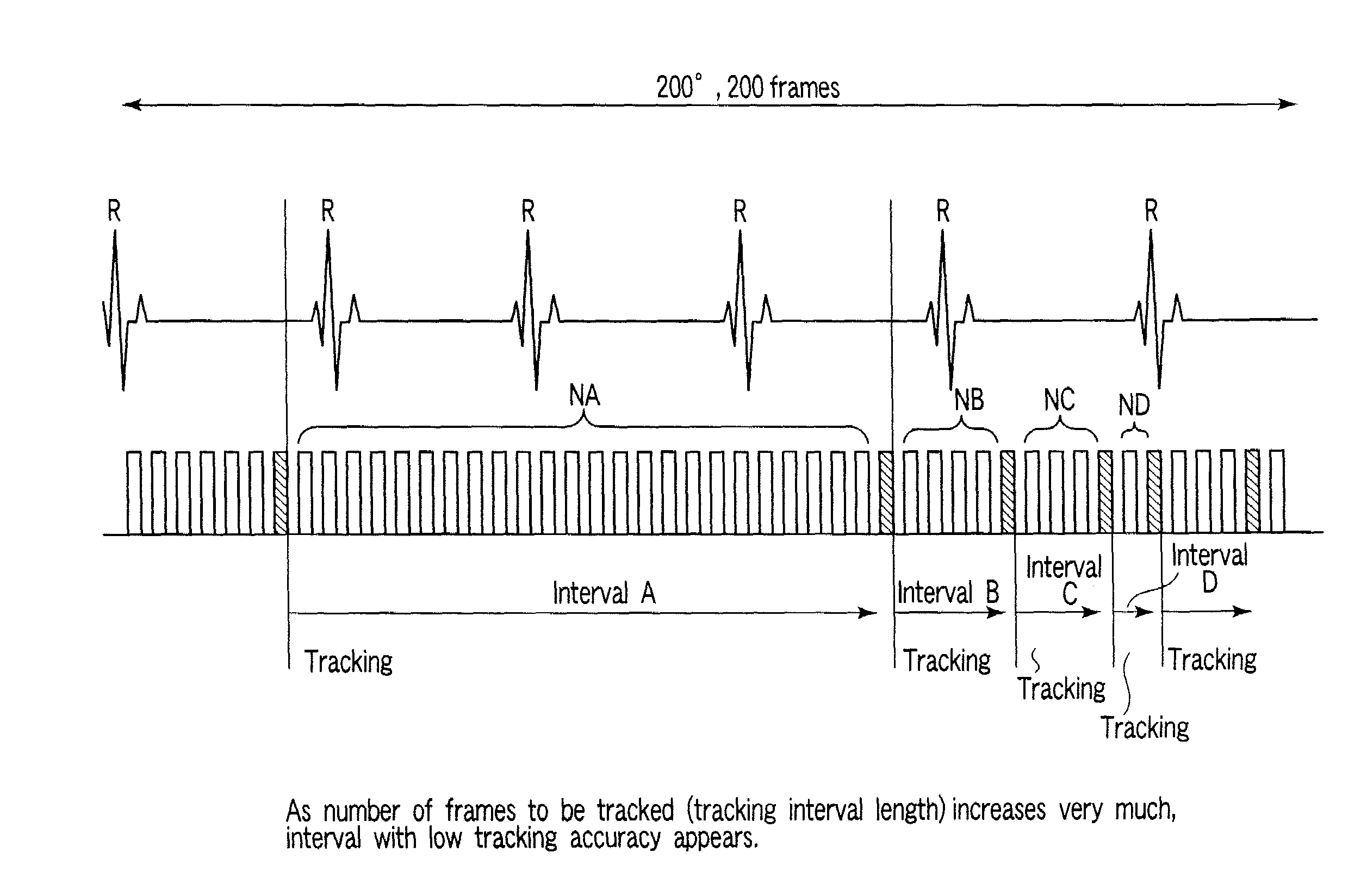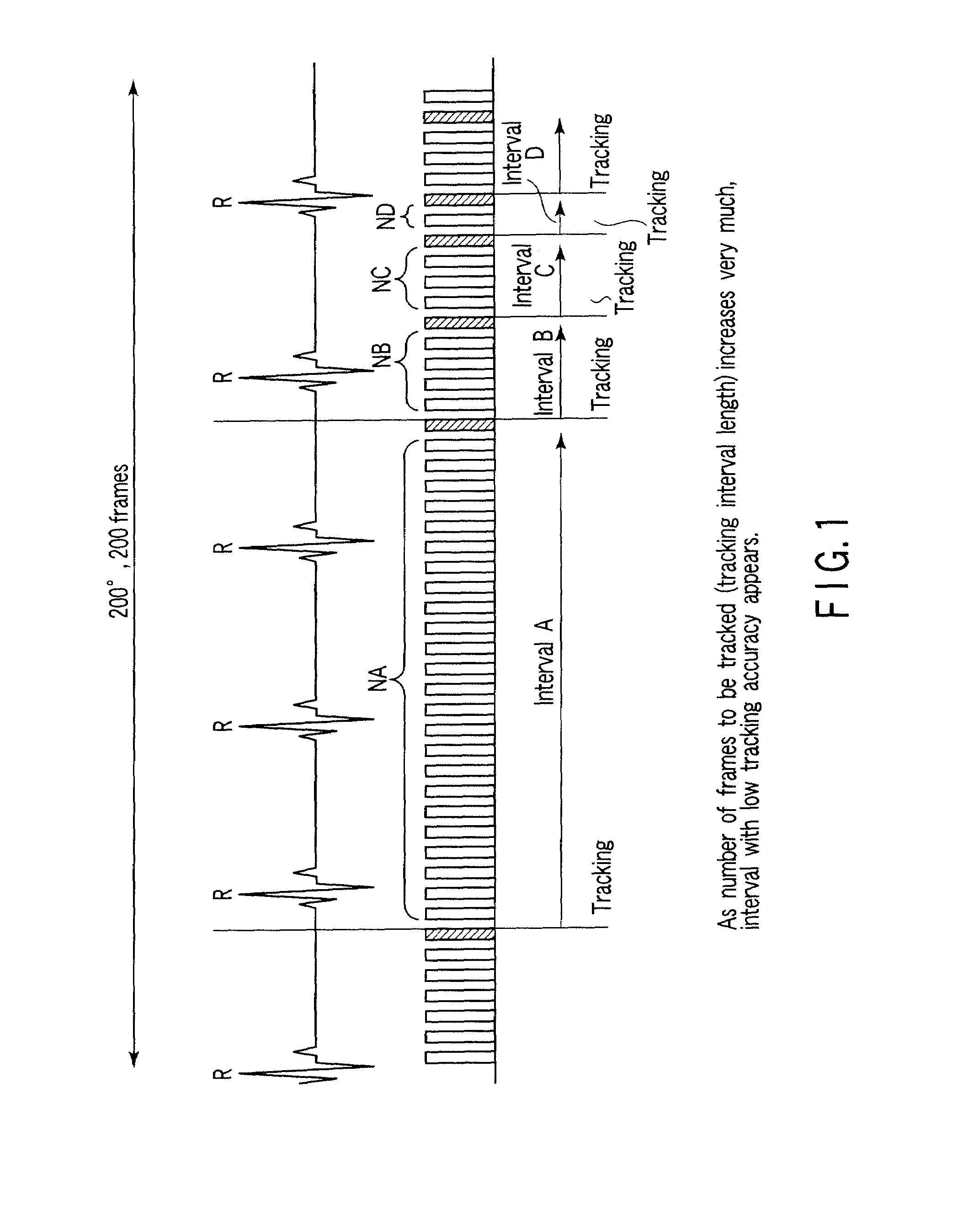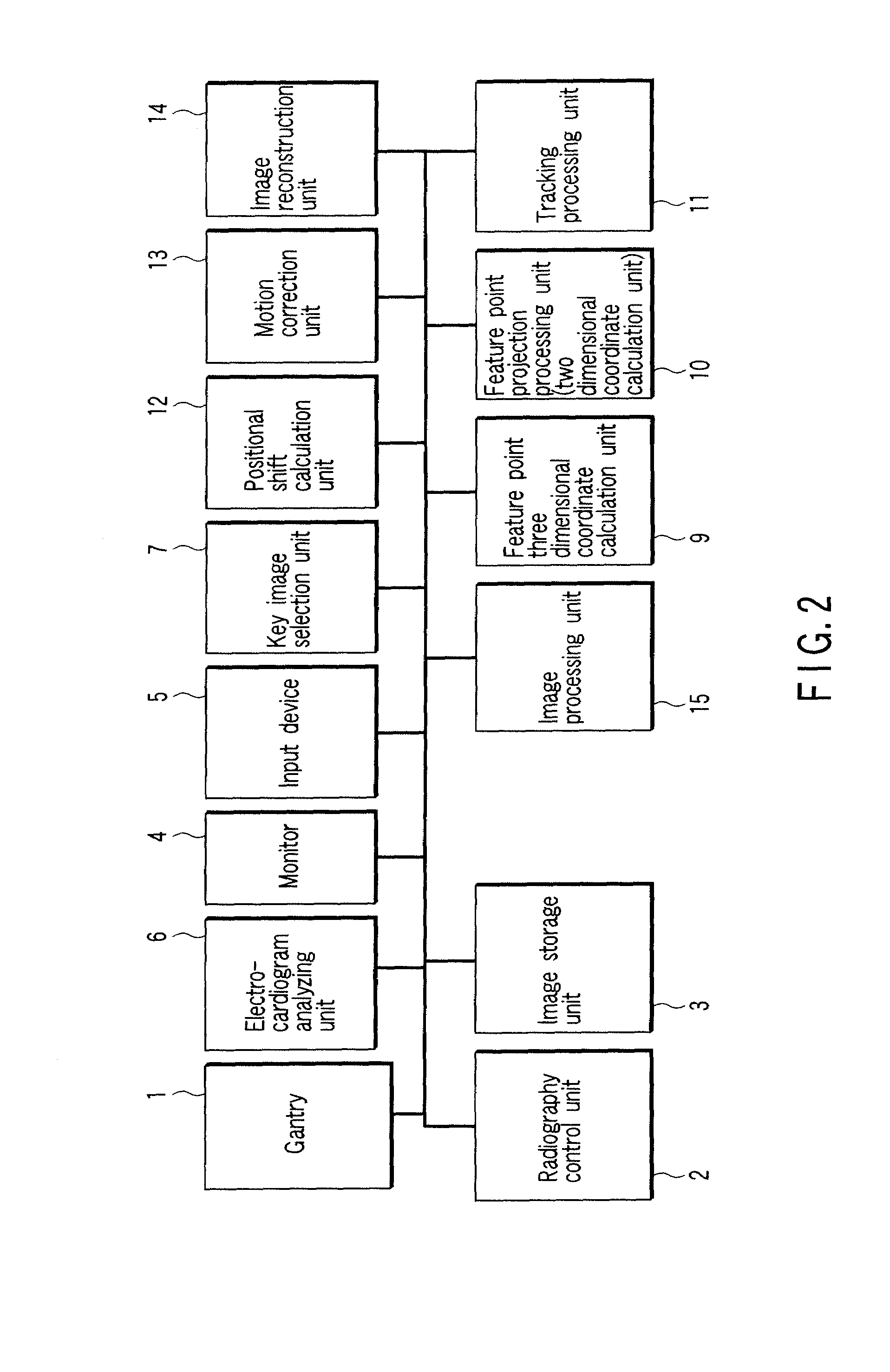Three dimensional image processing apparatus and x-ray diagnosis apparatus
a three-dimensional image and image processing technology, applied in material analysis using wave/particle radiation, instruments, nuclear engineering, etc., can solve the problems of large motion blur, unsuitable diagnosis image quality, arbitrariness, etc., to suppress variations in tracking interval length and stabilize image quality. a reconstructed image
- Summary
- Abstract
- Description
- Claims
- Application Information
AI Technical Summary
Benefits of technology
Problems solved by technology
Method used
Image
Examples
first modification
(First Modification)
[0082]If arrhythmia has occurred as shown in FIG. 14, no images are automatically selected from the corresponding heartbeat. In a heartbeat with arrhythmia, since the movement of the heart is not steady, it is difficult for the operator to designate a feature point. In order to save the operator from performing difficult operation, therefore, the apparatus does not automatically select any images with arrhythmia. When determining the presence of arrhythmia, the apparatus monitors heart rates (RR intervals), and determines a heartbeat accompanying an abrupt decrease or increase in RR interval by using a threshold.
[0083]In addition, when arrhythmia occurred as shown in FIG. 15, it suffices to automatically select many images in the corresponding heartbeat. In a heartbeat with arrhythmia, since the movement of the heart is not steady, the tracking performance deteriorates. Therefore, prompting the operator to input feature points in many images will stabilize the tr...
second modification
(Second Modification)
[0084]Key images are stably and automatically selected by the first to fifth techniques described above. Each technique further includes a function of allowing the operator to change an automatically selected key image at his / her own discretion. Assume that image #34 is automatically selected as a key image by one of the first to fifth techniques. The key image of image #34 is displayed on the screen to prompt the operator to select a feature point. When, however, the operator operates the “→” mark displayed on an end of the screen or the “→” key on the keyboard at his / her own discretion, image #35 adjacent to the automatically selected key image is set as a new key image. The operator can designate a feature point on image #35.
[0085]If, for example, a feature point overlaps a blood vessel on an automatically selected key image, it is difficult for the operator to identify the feature point. In such a case, it is possible to change (replace) the automatically se...
third modification
(Third Modification)
[0092]When no R wave can be detected in an electrocardiogram of a subject to be examined or R-R intervals extremely vary, the key image selection unit 7 discards an initially automatically selected key image, and forcibly selects key images at equal time intervals regardless of cardiac phases. Alternately, the key image selection unit 7 discards an initially automatically selected key image and prompts the operator to manually designate a key image.
PUM
 Login to View More
Login to View More Abstract
Description
Claims
Application Information
 Login to View More
Login to View More - R&D
- Intellectual Property
- Life Sciences
- Materials
- Tech Scout
- Unparalleled Data Quality
- Higher Quality Content
- 60% Fewer Hallucinations
Browse by: Latest US Patents, China's latest patents, Technical Efficacy Thesaurus, Application Domain, Technology Topic, Popular Technical Reports.
© 2025 PatSnap. All rights reserved.Legal|Privacy policy|Modern Slavery Act Transparency Statement|Sitemap|About US| Contact US: help@patsnap.com



